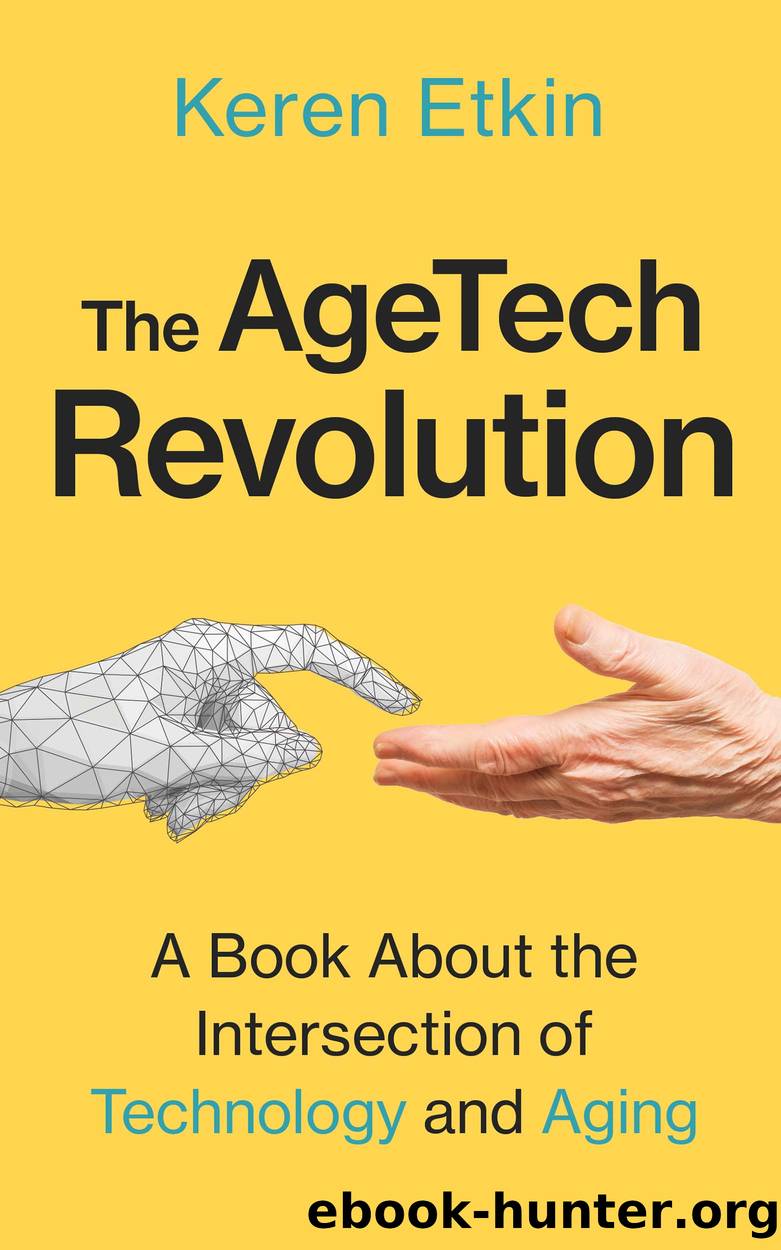The AgeTech Revolution by Keren Etkin

Author:Keren Etkin
Language: eng
Format: epub
Publisher: NewDegreePress
Published: 2021-12-07T19:24:48+00:00
Donât Compromise Usability to Make Things Look Pretty
In earlier chapters, we discussed the not-so-appealing design of some of the tech-enabled solutions that were available to older adults in the past, like PERS. These days, most companies put a lot of effort into making their devices look good. This is in part thanks to Appleâs influence on tech makers. Apple is known for making beautiful devices that make their owners feel proud to wear and use. Theyâve also, however, traded-off some usability in favor of âpretty.â
Don Norman is a world-renowned authority on user-centered design of digital products, the author of Design of Everyday Things and Emotional Design, a former VP at Apple, and Appleâs user experience architect from 1993 to 1996.
At Apple, Norman established a small, high-level group called the User Experience Architectâs Office, which worked across the company to make Apple products easier to use (Winograd, 1996). Norman worked with Bruce âTogâ Tognazzini, who was Appleâs sixty-sixth employee and the writer of its first human interface guidelines. Norman was also founding chair of the Cognitive Science Department and founder and director of the Design Lab at University of California, San Diego, as well as co-founder and Principal Emeritus of Nielsen Norman Groupâ an American computer user interface and user experience consulting firm, founded in 1998 by Norman and Jakob Nielsen. He has a wide background in electrical engineering, psychology, cognitive science, computer science, and design, and heâs also an adviser for Intuition Roboticsâmaker of companion robot ElliQ. Norman was born in 1935, which means heâs well into his eighties at the time of writing (jnd.org).
Norman published a series of articles in Fast Company that I have read and contemplated on over the years. During the research for this book, two in particular caught my attention: âI Wrote the Book on User-Friendly Design. What I See Today Horrifies Meâ (2019) and âHow Apple Is Giving Design A Bad Nameâ (2015), so I decided to reach out to Norman and have an open conversation about his thoughts on the topic of older adults and technology. More specifically, I wanted to gain a deeper understanding of what went wrong. How did Apple, which is considered a world leader when it comes to design of user interfaces and is one of the most profitable tech companies in the world, change from âdesigning easy-to-use, easy-to-understand productsâ to a company that designs products that âno longer follow the well-known, well-established principles of design that Apple developed several decades agoâ (Norman, 2015)?
Many of you reading these lines might not understand where this is coming from. After all, Appleâs products are considered to be some of the most beautifully designed and coveted gadgets in existence. Many companies try to imitate their sleek designs and perceived ease of use. Weâve all seen media coverage of lines outside the Apple store when a new iPhone is released to the public. Iâm sure that just like myself, many of you know older adults who have never used a computer or struggled
Download
This site does not store any files on its server. We only index and link to content provided by other sites. Please contact the content providers to delete copyright contents if any and email us, we'll remove relevant links or contents immediately.
| Anthropology | Archaeology |
| Philosophy | Politics & Government |
| Social Sciences | Sociology |
| Women's Studies |
The Leavers by Lisa Ko(6460)
Born to Run: by Christopher McDougall(6249)
iGen by Jean M. Twenge(4693)
Sapiens by Yuval Noah Harari(4528)
The Kite Runner by Khaled Hosseini(4414)
Spare by Prince Harry The Duke of Sussex(4188)
Bullshit Jobs by David Graeber(3171)
Livewired by David Eagleman(3113)
Goodbye Paradise(2949)
Never by Ken Follett(2869)
A Dictionary of Sociology by Unknown(2516)
Harry Potter 4 - Harry Potter and The Goblet of Fire by J.K.Rowling(2413)
The Club by A.L. Brooks(2350)
People of the Earth: An Introduction to World Prehistory by Dr. Brian Fagan & Nadia Durrani(2345)
The Social Psychology of Inequality by Unknown(2304)
Machine Learning at Scale with H2O by Gregory Keys | David Whiting(2263)
Harry Potter and the Order of the Phoenix (5) by J.K. Rowling(2224)
0041152001443424520 .pdf by Unknown(2213)
Don't Sleep, There Are Snakes by Daniel L. Everett(2212)
